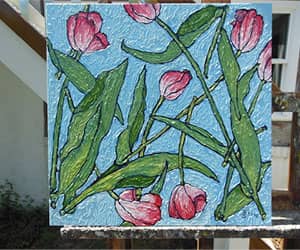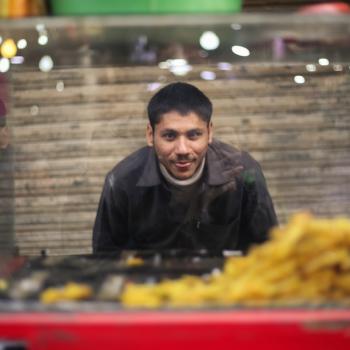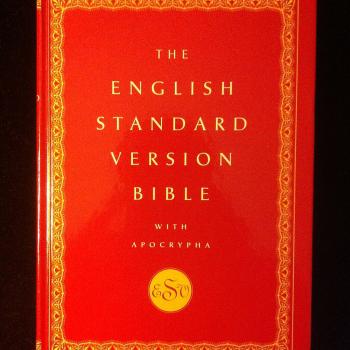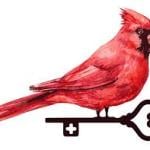Editors' Note: This article is part of the Patheos Public Square on Religion and Visual Art. Read other perspectives here.
One morning sometime in 1967, Dad woke, came to my room, banged on the door, and announced: "I have cheated you! When the girls were your age I took them to museums. I've been too busy with L'Abri. It is time we did something about this."
I was stunned and nervous. What on earth would it be like to be alone for weeks with Dad? I had been in boarding schools for the better part of six years and I was starting to see him more as Francis Schaeffer, the leader of L'Abri, than as my father. Our hikes had been getting infrequent during the holidays from school. Recently they had stopped. Dad was just too busy.
When my father and I took our father-son trip it was an art pilgrimage. I never saw Dad so happy than when he was looking at and discussing art. His face literally changed. He looked younger. At night when we ate in restaurants Dad never said grace over meals. It was as if Dad and I had a secret agreement that away from L'Abri, we would pretend we were normal people. Anyone overhearing our conversations would have assumed Dad was an art historian. If God got mentioned, it was as a subject of art. Dad left his Bible at home.
We'd check into a small, inexpensive hotel. Dad would sort out his tattered pile of city maps and dog-eared art books and plot a course. We would always comment on the pitifully tiny bars of soap, the strange little dishtowel-like bath "towels," the low wattage of the bedside reading lamp, the precariousness of the small, slow, dimly-lit elevators, and the joy of being in Italy, anywhere in Italy. The next morning we'd set out on a pilgrimage to places like the Carmine Chapel to see Masaccio's "Eve."
Dad was a great art history teacher. He would insist on looking at the art in Florence, Rome and Venice in chronological order. (My sister Susan told me she remembers how grateful she was that when she was a child visiting museums Dad always let her pick out something she liked to look at, before he told her what she should pay attention to.)
Dad would insist that I told him what I liked and why, before talking about a piece. Then he would gently guide me to the best works from some period, explaining the evolution of style, of subject, something about the period the art came from. We would start with Roman and Etruscan art, look briefly at the Byzantine and pre-Renaissance works in churches and Museums, and then take the Renaissance painters in order, beginning with Giotto. We might as well have been on a tour arranged by Vasari, as we followed the Renaissance from its beginnings all the way up to Leonardo, and beyond to the baroque to "crazy old El Greco" and the mannerists.
What is interesting is to note that in theory, Dad was opposed to the "humanism of the Renaissance," and was a champion of "Northern European Reformation art," the works of the good Protestants. But in practice it was the art of the Italian Renaissance that we spent much more time soaking up. We stood in front of pictures like the "Birth of Venus" and the "Primavera" as if before altars. And we looked, really looked, having waited to reward ourselves with these ultimate Renaissance visions of loveliness, order, and idealism. We had plodded through countless pre-and early Renaissance Virgin and Childs in lovely dark old churches where we'd insert 50 lira coins in a slot to turn on the lights that would illuminate faded frescos. Dad would build up a verbal picture of the rediscovery of perspective, of the lost methods of the Romans, point out at what moment Renaissance painting surpassed Roman and Greek inspiration.
In his L'Abri lectures, and later in his books, Dad would explain and even lament all this "humanistic art" that placed "man, not God at the center of the universe." But when he was looking at the art with me, all we talked about was how beautiful it was, how remarkable it was that competitions were held to design Florence's baptistery doors, how stunning the achievements were: Brunelleschi's dome for the cathedral, Giotto's bell tower, the Della Robbia family and their blue and white glazed terracottas, not to mention our favorite, the choir stall carved by Della Robbia and preserved in the Museo Del Opera Del Duomo.
I saw Dad as he might have been, free of the crushing belief that God had "called" him to save the world. And my father became my biggest fan when I began to paint more and more seriously. Along with Mom he backed me to the hilt after I began to show and sell paintings.
 |
| Tumbling Tulips of the Heart © Frank Schaeffer |




